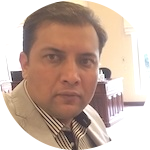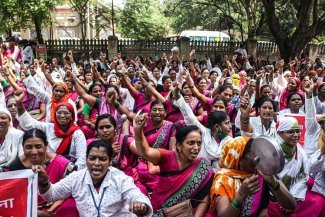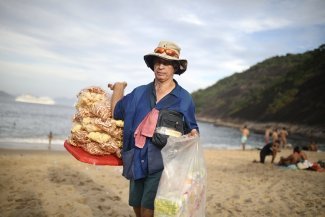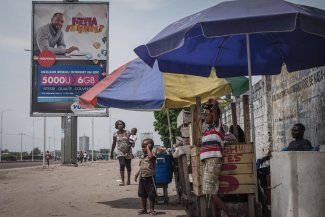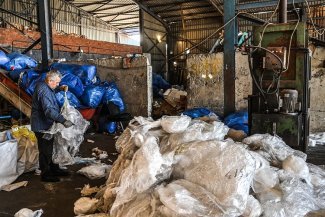For a country that has endured decades of brutal war, foreign invasion and terrorist violence, the events of 30 April 2018 will go down in infamy as “the deadliest day in Afghan media history”.
Nine journalists were killed while covering an earlier suicide bombing in the capital city of Kabul while another journalist was shot dead in eastern Afghanistan.
The first blast took place as a motorcyclist detonated explosives during rush hour traffic in the Shash Darak neighbourhood of the city. About 30 minutes later, a suicide bomber posing as a reporter blew himself up at a security cordon near the site of the first bomb. A total of 29 people were killed in the two attacks, which were both claimed by the so-called Islamic State (IS) terrorist group.
Amongst the fatalities were nine journalists: Farishta Mehram Durrani, Ebadullah Hananzai and Sabawoon Kakar of Azadi Radio; Yar Mohammad Tokhi, a cameraman with TOLOnews; Ghazi Rasooli and Nowroz Ali Rajabi of 1TV; Saleem Talash and Ali Saleemi of Mashal TV; and Shah Marai, AFP’s renowned chief photographer in Kabul.
On the same day, unknown gunmen killed BBC Afghan Service journalist Ahmad Shah in Khost province, eastern Afghanistan.
“This terrorist attack is a war crime and an organized attack on the Afghan media,” read a statement issued by the Afghanistan Federation of Journalists. “Despite today’s attack and other threats against journalists, the Afghan media is committed to providing information.”
Suicide bombs and other forms of violence have been commonplace in Afghanistan for years, but the recent surge in attacks on journalists has sent shockwaves throughout the global media fraternity.
“The reigning impunity for crimes against journalists and the government’s lack of concrete action to protect journalists are key causes of increased violence against journalists in Afghanistan,” said Anthony Bellenger, general secretary of the International Journalists’ Federation (IFJ) in a statement. “The IFJ urges Afghan government to urgently take drastic action to ensure the safety of journalists and justice to slain journalists.”
“There is no other option”
Although IS claimed responsibility for the 30 April attacks, the Taliban has been responsible for scores of journalists’ deaths over the years. Both groups target journalists as well as media infrastructure (offices, communication towers, etc) in a bid to prevent reports about the atrocities they commit.
Members of Afghan’s press corps are heartbroken and shaken by the deadly violence but they are resolved to continue their work – out of duty, out of necessity but also as a coping mechanism. “I guess what helps me cope with the pain is sharing some of those emptions and sharing some of that burden as a journalist. I write it,” Mujib Mashal, a senior Afghan journalist associated with the New York Times told CNN in the aftermath.
Another Afghan journalist, who asked not to be named, told Equal Times while covering another suicide bombing that took place near a blood donation camp in the heart of Kabul on 7 May: “There is no other option. We can either continue working as we are or quit and stay home with no income or assistance,” he said.
Hakima Hejran is a radio journalist who used to work with Farishta Mehram Durrani of Azadi Radio. She says that as many journalists are the main breadwinners for their families, the impact of any death is economically as well as emotionally devastating.
Hejran recently visited Durrani’s family and was distressed by what she encountered: “While her unfortunate and tragic death is still unbelievable for me, what broke me further was my visit to her family’s mud house. Her parents are reeling from her heart-breaking death in extremely poor conditions.”
Lack of training and safety equipment
Since the fall of the Taliban in 2001, the private media sector has flourished. Currently, there are some 170 radio stations, dozens of newspapers and close to 100 TV channels operating throughout the country.
But recent events have called journalists’ safety into question, while a debate over the training and safety equipment required to prepare local journalists for the dangers of working in the country has also emerged. Only a handful of Afghan journalists receive even basic first-aid or hostile environment training, while very few media outlets dispatch their reporters into the field with safety vests and helmets.
Steven Butler, the Asia region coordinator at the Committee to Protect Journalists (CPJ), told Equal Times that while the blame for the killing of journalists belongs squarely with the perpetrators, some lessons should be learned from such tragedies: “It’s not possible to eliminate all risks when operating in a war or conflict zone, but steps can be taken to reduce those risks.”
He continued: “Journalists and assignment editors should expect secondary bombings or other attacks whenever an initial attack occurs. Journalists should be trained to approach the scene of these attacks cautiously, stay at a distance, and avoid bunching up into an easily attacked group. Although it’s expensive, the provision of protective gear – such as body armor and helmets – would be useful,” he said.
Afghanistan is currently the most dangerous place in the world to be a journalist. Of the 26 journalists killed in 2018 so far, 10 died in Afghanistan, which is the highest number of fatalities for any single country.
To put that into context, the number of journalists killed in Afghanistan this year to date is more than a fifth of the total of journalists killed in Afghanistan since 1992.
Speaking to Equal Times, Rahimullah Samandar, president of the 1,900 member-strong Afghanistan Independent Journalists’ Association (AIJA), highlighted the grim threats faced by local journalists.
“The main obstacle here is that not many local media organisations can afford to hire well-versed and qualified foreign trainers. We are in contact with international organisations such as the International Federation of Journalists, the Institute of War and Peace Reporting, the Committee to Protect Journalists and others to help us in this regard,” he said.
Rights groups are all stressing the importance of bringing the perpetrators of the attacks on journalists to justice. “This is a responsibility of not only the Afghan government but of international bodies such as the International Court of Justice and the UN,” said Butler of the CPJ.
“The international community should bear some of the burden of taking steps to protect journalists because it’s not just Afghans who need the information these brave journalists provide, but people and governments around the world,” he stressed.


